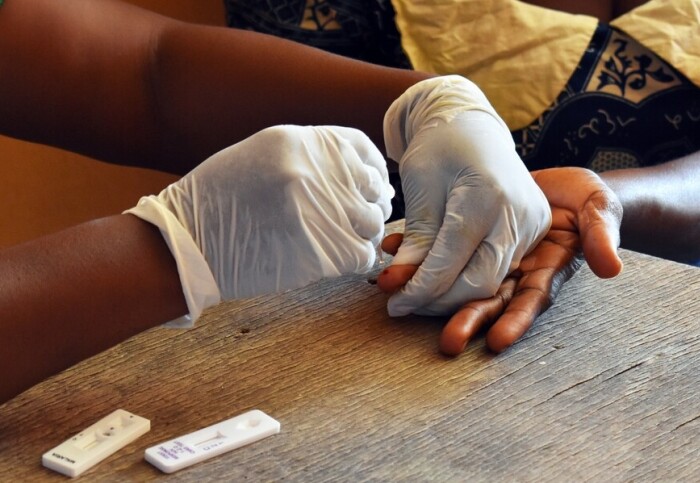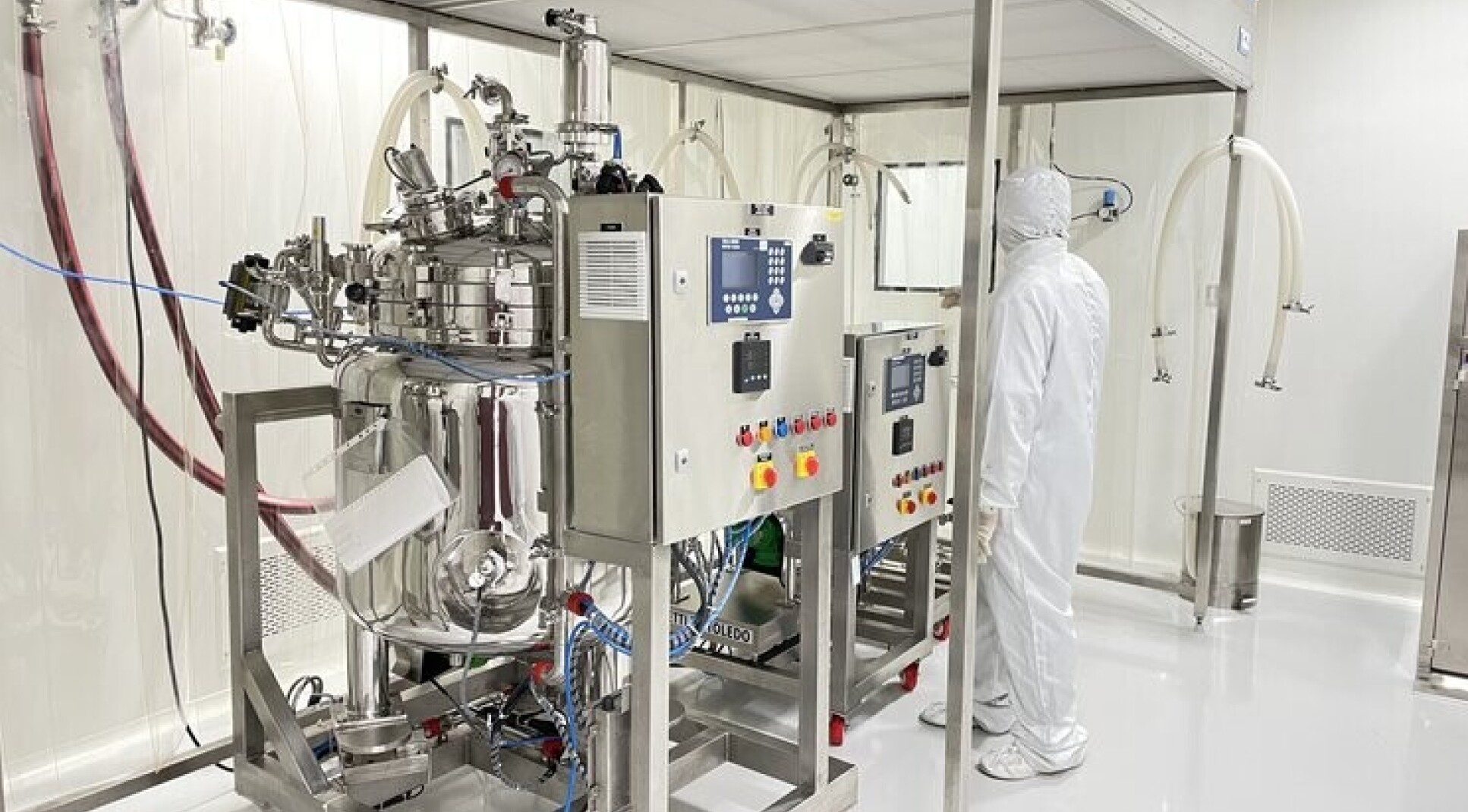

Infecting volunteers with malaria reveals why some get sick and others don’t – and points to ways to induce stronger immunity through vaccination.
A ‘human challenge’ study – purposefully infecting volunteers with malaria – has revealed crucial insights into how new, more effective malaria vaccines can be designed. Malaria is transmitted by certain species of mosquitoes and was responsible for an estimated 608,000 deaths in 2022, largely in sub-Saharan Africa.
The trial showed that the principle behind most vaccines – producing antibodies that attach to the pathogen and block it from entering human cells – is only part of the story for malaria infection. Instead, antibodies that effectively ‘recruit’ other parts of the immune system were shown to be more protective against the illness in malaria infection.
These findings could improve vaccines for malaria and beyond, potentially saving many lives worldwide. Professor Faith Osier
The international research team have already isolated one potential route to producing these kinds of antibodies, and are manufacturing experimental vaccines on multiple platforms to identify which one induces the best response.
The research, led by scientists from Imperial College London, Heidelberg University Hospital and the Kenya Medical Research Institute, is published in the journals Immunity and Life Science Alliance.
Lead researcher Professor Faith Osier, Co-Director of the Institute of Infection and Chair in Malaria Immunology & Vaccinology in the Department of Life Sciences at Imperial College London, and Director of Chanjo Hub, said: “Malaria is still a serious burden that kills hundreds of thousands of people every year, mostly children under five years old. We have many tools to fight the disease, but progress has stalled, and we badly need malaria vaccines that are highly effective and offer long-term protection.
“Our study shows that the way we have been thinking about vaccines is too narrow in terms of how they might work. These findings could improve vaccines for malaria and beyond, potentially saving many lives worldwide.”
Designing vaccines
It is more difficult to design vaccines for malaria than infections such as Covid-19, because of the complexity of the malaria parasite. The virus that causes Covid-19 is made up of around 30 protein building blocks, while malaria is caused by a parasite that is made up of more than 5,000.
The malaria parasite also transitions through several distinct forms within the human body and the mosquito as it completes its life cycle. For the immune system, this means trying to track down an ever-changing invader.

The clinical symptoms of malaria develop once the parasite has entered the human red blood cells where it grows, multiplies and continuously infects and destroys new red cells. Vaccine development has therefore logically focused on blocking the parasite from entering human cells, referred to as invasion-inhibition.
This works by interfering with a ‘lock and key’ style system of proteins. A protein on the parasite could be the lock, while another, on the red blood cell, would be the key. Vaccines work by generating antibodies that block the interaction between the lock and the key, usually by sticking to the lock on the parasite.
Identifying the ‘lock’ for malaria has been difficult. The two malaria vaccines that are currently licensed target a single lock, the circumsporozoite protein, which is found on the form of the parasite that’s injected into the skin by mosquitoes. The efficacy of these vaccines ranges from 30 – 75%, and they require several repeat doses, which can be difficult to deliver because they require refrigeration and are often needed in remote areas.
Goldmine data
In an effort to design better malaria vaccines, the team went back to first principles based on their observations of malaria in Africa: why was it that some people who got the infection did not get ill while others did? To find out, they conducted a human-challenge study: purposefully infecting volunteers with malaria and studying how their immune systems responded in great detail.
Thanks to the wealth of data from the human challenge trial, [we] are working to create and test several experimental vaccines. Professor Faith Osier
The Controlled Human Malaria Infection in Semi-Immune Kenyan Adults (CHMI-SIKA) study involved 142 adult volunteers who were resident in Kenya and had previously been infected with malaria multiple times through mosquito bites.
The volunteers all received an intravenous dose of malaria from a strain that could be cured using antimalarial drugs if they became unwell. Their health was then closely monitored in a secure facility for three weeks.
This produced what Professor Osier calls a “goldmine” of information. The main finding was that the production of antibodies to ‘block the lock’ was not what separated the groups of volunteers who got ill from those that didn’t.
Instead, volunteers that produced antibodies that were good at ‘recruiting’ other parts of the immune system, such as macrophages, neutrophils, and natural killer cells, were more likely to be protected from developing clinical symptoms of malaria.
New directions
The team also discovered that the game was not over once red cells had been invaded. They found that the parasite leaves a trail of proteins on the surface of infected and even uninfected red cells that is detected by the same antibodies that are good at recruiting other components of the immune system. This part of the study was published in Nature Communications.
Professor Osier said: “Antibodies are the ‘conductors’ of the orchestra – the other parts of the immune system cannot act without their direction. Antibodies can thus have a dual role, in fighting the infection and recruiting others to complete the symphony.
“We now have a new direction for vaccine research: this time finding the ‘right’ protein on the pathogen that these ‘conductor’ antibodies will attach to. Thanks to the wealth of data from the human challenge trial, we already have a candidate for this, and are working to create and test several experimental vaccines.
“The work provides a compelling demonstration of the power of human challenge studies in not only providing detailed data, but also in opening up whole new avenues for urgently needed research to design better vaccines.”
Local manufacturing
Professor Osier is also leading a new £6.5m vaccine manufacturing hub. The Chanjo Hub is an African-led, academic-industry partnership designed to catalyse the local ‘ecosystem’ necessary for establishing vaccine manufacturing in Africa, with pilot projects in Kenya and Ghana.
It is now producing experimental malaria vaccines based on the proteins identified in the study. The team hope the programme will serve as a prototype to develop and strengthen vaccine manufacturing capability in low- and middle-income countries.
Histesh Vaghjiani, Managing Director at partner Tasa Pharma, said: “Tasa Pharma is excited to collaborate with Professor Faith Osier and the Chanjo Hub to advance and localise vaccine production in Africa. This partnership represents a pivotal move towards achieving self-sufficiency in vaccine availability and propels us towards the groundbreaking development of a potential new malaria vaccine for the region. Together, we are poised to make a positive impact on public health in Africa, driving forward a new era of healthcare resilience.”

Dr Eluem Blyden, CEO of partner Avril Biopharma, said: “I am excited to support this groundbreaking initiative led by Professor Osier and her team at Imperial College London with our recombinant production technologies. The end-to-end development of a next-generation malaria vaccine in Africa, by African scientists, industrialists, and regulators, is a key milestone for this project. Chanjo Hub's catalytic role is crucial to its success.”
Philip Probert, Technology Lead at partner CPI (Centre for Process Innovation), said: “We are excited to be working with Professor Osier to develop more effective malaria vaccines for lower-middle-income countries. This is a hugely exciting project for us to work on, and the impact this could have in saving hundreds of thousands of lives each year is astounding. By lending our knowledge and expertise in the development and manufacture of novel vaccine therapies, we aim to accelerate the development of this life-saving therapy, expanding its reach into locations across the globe.”
Dr Ebenizer Ansa, Director of CSIR (Council for Scientific and Industrial Research), said: “Our interaction with Professor Osier and her team during the visit to CSIR was truly exciting. Her passion for building capacity in vaccine development in Africa using cutting-edge technology is a great source of inspiration for our team in Ghana. This initiative will undoubtedly increase the acceptance and use of vaccines in this region.”
-
‘Breadth of Fc-mediated effector function correlates with clinical immunity following human malaria challenge’ by Irene N. Nkumama & Rodney Ogwang et al. is published in Immunity.
‘Full-length MSP1 is a major target of protective immunity after controlled human malaria infection’ by Micha Rosenkranz et al. is published in Life Science Alliance.
‘Phagocytosis of Plasmodium falciparum ring-stage parasites predicts protection against malaria’ by Fauzia Musasisa et al. is published in Nature Communications.
Supporters


Article text (excluding photos or graphics) © Imperial College London.
Photos and graphics subject to third party copyright used with permission or © Imperial College London.
Reporter
Hayley Dunning
Communications Division

Contact details
Email: press.office@imperial.ac.uk
Show all stories by this author




Leave a comment
Your comment may be published, displaying your name as you provide it, unless you request otherwise. Your contact details will never be published.